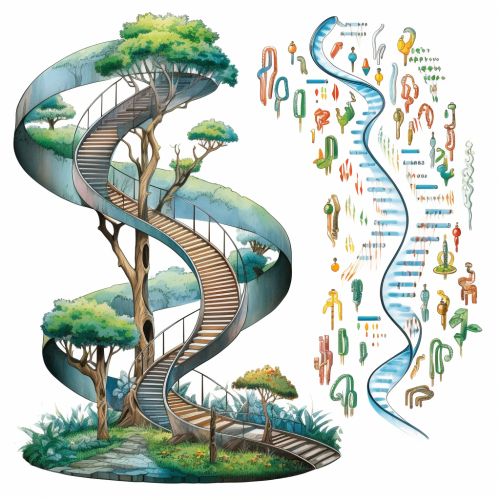Genetic Algorithms
Introduction
Genetic algorithms (GAs) are a type of evolutionary algorithm that mimic the process of natural selection to solve problems. They are used in computer science and engineering for optimization and search problems, where they can find approximate solutions to complex problems that are difficult to solve with traditional methods.
History
The concept of genetic algorithms was first introduced by John H. Holland in the 1960s. Holland's work was inspired by the biological theory of evolution, and he sought to apply these principles to computer algorithms. His book, "Adaptation in Natural and Artificial Systems," published in 1975, is considered the foundational text of genetic algorithms.
Principles
Genetic algorithms operate on the principles of selection, crossover (or recombination), and mutation. These principles are borrowed from biological evolution and applied to a population of potential solutions to a given problem.
Selection
Selection is the process by which certain individuals in the population are chosen to reproduce based on their fitness. The fitness of an individual is determined by a fitness function, which evaluates the quality of a solution. The better the solution, the higher the fitness score, and the greater the chance of being selected for reproduction.
Crossover
Crossover is the process by which two parent solutions are combined to create offspring. This is done by swapping parts of the parent solutions with each other. The point at which the swap occurs is chosen randomly, and the resulting offspring contain a mix of the parents' characteristics.
Mutation
Mutation introduces random changes into the population. This is done by altering one or more genes in a solution's representation. Mutation is a crucial part of genetic algorithms as it introduces diversity into the population and prevents the algorithm from getting stuck in local optima.
Representation
The representation of solutions in genetic algorithms is typically done using binary strings, although other representations such as real numbers or permutations can also be used. The choice of representation depends on the problem being solved.
Genetic Algorithm Process
The process of a genetic algorithm involves the following steps:
1. Initialization: A population of potential solutions is randomly generated. 2. Evaluation: Each individual in the population is evaluated using the fitness function. 3. Selection: Individuals are selected for reproduction based on their fitness. 4. Crossover: Offspring are created by combining the genes of the selected parents. 5. Mutation: Random changes are introduced into the population. 6. Termination: The algorithm terminates when a stopping condition is met, such as reaching a maximum number of generations or achieving a satisfactory fitness level.
This process is repeated until a suitable solution is found or a stopping condition is met.
Applications
Genetic algorithms have been applied to a wide range of problems, including optimization, machine learning, and artificial intelligence. They are particularly useful for problems where the search space is large, complex, and poorly understood.
Advantages and Disadvantages
Genetic algorithms have several advantages, including their ability to explore a large search space and find global optima. They are also robust and can handle noise and changes in the problem environment. However, they also have disadvantages, such as their tendency to converge prematurely to local optima and their computational cost.
See Also


